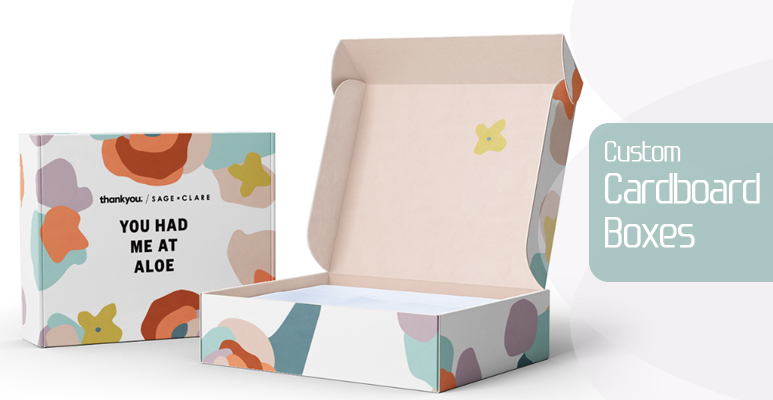Cardboard boxes are one such solution you mostly use for shipping, packaging, or storing different goods. You will find their common use in retail stores or other customers or businesses. They are a big part of “packing,” which means the materials used to protect things during shipping.
One major purpose of using cardboard is for packaging. The different kinds of cardboard packaging can be available in a wide range of weights, widths, and thicknesses to be accessible for almost any purpose.
Through this guide, we will discuss types of cardboard boxes and how you can determine the quality of packages. Let’s get into the discussion below:
List of Different Kinds of Cardboard Boxes
Depending on your needs, you’ll need different kinds of cardboard packaging. Here are a few of the various basic types of cardboard boxes packaging:
One-Sided Board
Single-faced board is the common type of packaging in cardboard boxes. This is just the corrugated cardboard that does not have the second section on the other side of the fluted layer.
This way of packing is often available to separate things in the same box so they don’t bump into each other or break while you are shipping it.
Hence, this is standard corrugated boxes cardboard, available in many shipping boxes and another cardboard packaging. Even though it only has one flute layer, this type of cardboard is often best to use to make boxes because it is strong.
Two-Sided Board
Of course, the double-wall board has an extra layer of flutes in between the two outer layers. This makes the board stronger and gives the goods inside a little more protection.
Three-Layer Board
As you may have guessed, the triple-wall board has three levels of flutes between the two outside walls. This corrugated cardboard wrapping is only necessary for heavy things, like car parts or large appliances.
On the other hand, these kinds of cardboard packaging are rare and only available in very few situations.
Corrugate Fiberboard
Corrugated fiberboard is a three-layered material. It is flat outside on each side and has a curvy surface in the middle.
The wavy center of the material makes it stronger, so it can hold heavy things without breaking or collapsing.
Corrugated fiberboard comes in many widths, so it can be used with either strong or weak cardboard, depending on what needs to be packaged. Letters are often used to show the sizes of corrugated fiberboard. The size is based on how wide and how often the waves in the middle of the flute surface are.
Honeycomb Card Stock
This cardboard boxes packaging isn’t used as often as others, but it’s used a lot because it’s strong. Well, this cardboard type has a length based on different corrugation layers.
It has a width board in a sheet of extra multilayered paper wrapped around each of the edges.
Paper Board
Paperboard, also called chipboard or carton, doesn’t last as long as corrugated fiberboard. It is mostly used for lightweight items or applications that don’t have to hold a lot of weight.
How do you determine the quality of boxes? Different types of testing methods
When you buy the cardboard boxes, you need to know how much they can hold against the outside elements to ensure you’re making the right choice. To help you figure out how strong a box is, we’ll show you a few ways to test it.
Let’s highlight a few testing methods with which you can determine the quality of boxes:
Testing for Burst Strength
The Mullen Test is another name for the burst strength test. This test measures how well the walls of the boxes stay together when a lot of pressure is settling on them. The Mullen Tester between two clamps holds the packaging sample.
Later, the rubber diaphragm is pumping up until it bursts against the box walls. This will be helpful to know how much pressure a package can resist before it faces any cracks or damage.
Gluing’s Water Resistance
The glue on the inside of the corrugated boxes is fine as long as they can stand up to the weather. When a package is sent over a long distance, it is often exposed to harsh weather.
Most importantly, the box must be able to withstand rain to protect what’s inside. So, they put the carton boxes to the test. If you put the carton package in water, you can see how well the glue sticks and how much water they can hold.
Box Compression Test
This test is quite a lot similar to the Mullen Test. But in this method, the entire box is available besides using the sample.
It will determine how much weight the box can hold before it loses its shape or breaks down completely. By testing the container compression, you can easily discern how many boxes will be able to stack on top of one another.
Weight and Thickness of the Paper
The paperweight, or Grammage in a more technical sense, is a key factor in figuring out how good the box is. Talk to the company that makes your carton boxes about how thick and heavy they should be for your current shipping needs.
A thicker carton box is the best choice when there needs to be more shock absorption. The flutes in these boxes are wide and can hold more air, while the flutes on thin boards are close together and can hold more weight.
To sum up this whole discussion, it is important to know how cardboard is best available in packaging if you want to make the right choices when designing cardboard boxes packaging.
All the above tests would let you know how good and reliable the cardboard boxes you want to use to pack, store, or ship your goods.


